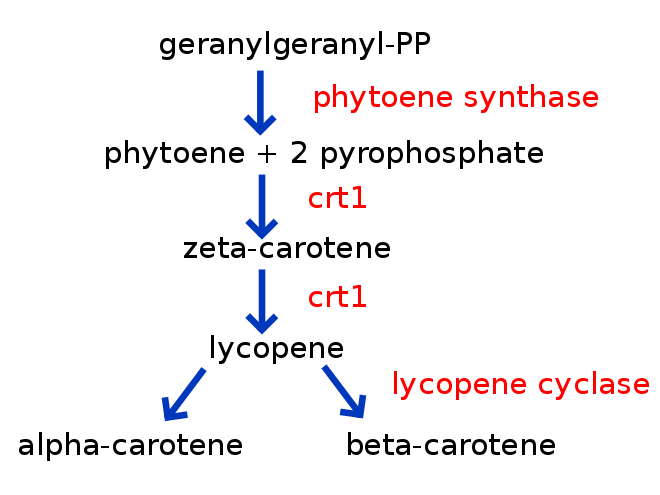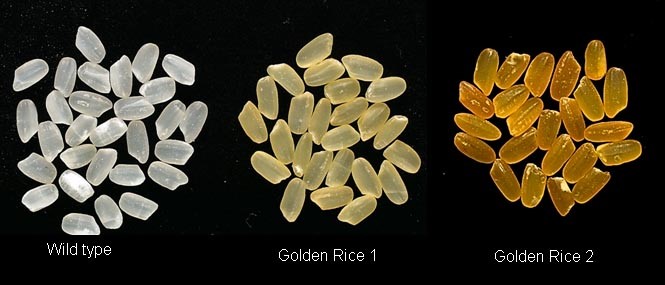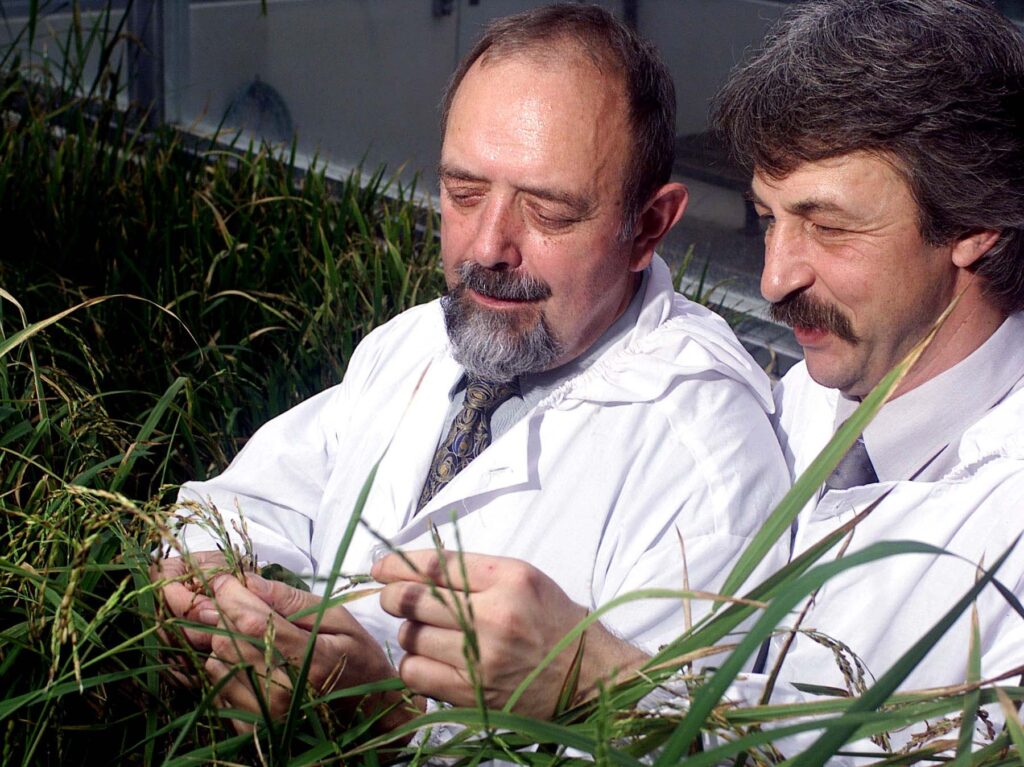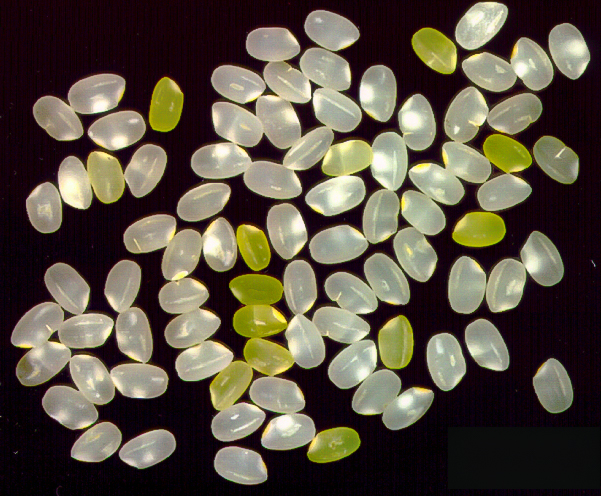The background to the “Golden Rice” project
It has become very quiet around the “Golden Rice” in recent years. Everything seemed to have been said and the work “behind the scenes” found little public interest. But now it has reappeared in the media – for example in a very good article in the “Republik ” as well as in the “Spiegel“, the “Neue Zürcher Zeitung” and “Der Standard“. “Time” counts the first harvest among the “10 Ways the World Got Better In 2022”.
After more than 20 years of hard battle for permits and fierce campaigns by opponents, the first harvest of about 70 tons has now been brought in in the Philippines – a modest amount compared to the total annual production of about 18 million tons of “ordinary” rice per year.
The story of Golden Rice is long and complicated. On the one hand, there have been delays in the development itself, and on the other, there have been massive disruptive campaigns that have long prevented experimental cultivation and permits for deregulation. NGOs, including Greenpeace, have spent millions of euros to stop the potentially life-saving rice. Politicians have not shied away from spreading false data in order to discredit what is often referred to as the “Trojan Horse of genetic engineering” (this implied that, under the pretext of a humanitarian project, genetic engineering would gain more acceptance and could thus be introduced more easily “through the back door”). The Golden Rice Humanitarian Board estimates that these disputes have delayed availability of Golden Rice by at least 12 years and increased costs by $65 million. The loss of time can also be translated into about 1.5 million preventable deaths, according to WHO figures (see below).
What is Golden Rice?
Rice is the staple food in Asia and the main source of calories. In many emerging and developing countries in Asia, there is “hidden hunger”: the lack of varied nutrition due to too high food costs leads to deficiencies in micronutrients in the poor population. So it’s not that people have too little to eat overall, but that they lack certain nutrients such as vitamins. Vitamin A deficiency (VAD) is a major problem, leading to blindness and death. The WHO estimates that there are approximately 250,000 to 500,000 victims per year.
In the late 1990s, Ingo Potrykus and Peter Beyer began to genetically enrich rice with a vitamin A precursor. For this purpose, genes were inserted into the rice genome that code for enzymes that in turn synthesize the vitamin A precursor ß-carotene. In the human body, ß-carotene is processed to vitamin A. For this, they used knowledge of the biosynthetic pathway of ß-carotene and nature’s toolbox: genes from other organisms that carry out individual steps in ß-carotene synthesis. Originally, it was assumed that three enzymes (genes) were required to produce ß-carotene from the basic substances present in the rice grain: one gene called PSY was taken from the daffodil, a second (LCY) also came from the daffodil and the third (CRTI) from the bacterium Pantoea ananatis.

To a layman, this may sound adventurous: so many “foreign” genes and “foreign” enzymes? Ism’t that scary? However, it sounds less adventurous when you consider that genetic exchange between different species is quite common in nature, for example also between bacteria and plants. With regard to humans, it should not be forgotten that diabetics injected insulin from pigs for decades and that the milk sugar in “lactose-free milk” is mostly broken down by enzymes from molds.
It turned out very quickly that the concept worked: golden-yellow rice grains enriched in ß-carotene were visible to the naked eye.
However, the proof-of-principle was not enough. The PSY gene worked, but not optimally. The corresponding gene from corn worked much better and the content of ß-carotene was again significantly increased in “Golden Rice 2”.

The yellow color indicates the content of ß-carotine.
Photo: Golden Rice Humanitarian Project.
The content of one grain of Golden Rice is so high that 60 grams of (dry) rice are enough to remedy the vitamin deficiency. Even the inventors were not so optimistic that all problems would vanish into thin air. They estimated that about 50% of the deaths from VAD could be prevented – that would be 100,000 to 250,000 victims per year.
Golden Rice and its opponents
From the beginning, Potrykus and Beyer had aimed for a humanitarian project. In negotiations, patent protection was restricted so that small farmers can obtain the seeds free of charge and also breed them. Crossing into local varieties is permitted and supported by the International Rice Research Institute (IRRI).
Theoretically, Golden Rice could have been growing in the fields as early as 2003, after about 4 years of development. However, the biggest hurdle was approval for cultivation and human consumption, which took nearly 20 years. Very disillusioned, Potrykus notes that this long process may have cost about 2 million lives.
Of course, with any new food, safety for humans and for the environment must be considered. However, it is likely that the opposition was less about real science-based safety concerns – an overwhelming majority of scientific studies attest to the safe cultivation of Golden Rice – than a fundamental rejection of green genetic engineering and seed patenting. Legal and political interventions were carried out with many millions of dollars, up to the (very likely) organized destruction of trial fields. Completely ignored, however, are the facts that Golden Rice is not a commercial product, but of a humanitarian project. There are patents, but cultivation licenses are free for small farmers, and seed breeding is also allowed.
A key argument of opponents: “the problem of VAD can be solved more easily by vitamin A pills.” However, humanitarian organizations cannot regularly cover all areas, especially those with the poor infrastructure. In addition, costs for the pills are much higher. This money must be raised again and again via donations and government funding. This means that the poor population again becomes dependent on industry, donors and humanitarian organizations. Golden Rice, on the other hand, would help people to help themselves.
Our conclusions
Food safety is of paramount importance. New varieties are constantly being developed, mainly through conventional breeding. It is important to know that, especially in conventional breeding, extensive and unpredictable mixing of genomes takes place. What effects these mutations or their combinations have is not known. In the blog article “Mutants“, we show how the rice genome was changed unnoticed in a breeding series. This plethora of mutations was only discovered when DNA from various intermediate products of breeding was fully sequenced.
However, this does not mean that products of plant breeding are highly dangerous, and this is also true for products of genetic engineering. In its report, the German Ministry for Research concluded that crops generated by genetic engineering carry the same risks as those generated by conventional breeding. The conclusion is based on 25 years of bio-safety research. In any case, a responsible safety analysis is required. However, the product in question must be tested, and the method by which it was generated.
At the same time, it is important to compare the risks and benefits. By definition, risks can never be completely ruled out. If the precautionary principle is interpreted in such a way that absolute safety is the required for approval of a new variety, then no new variety will ever reach the market. But this is necessary, because new varieties – both with and without genetic engineering – can significantly contribute to preserving biodiversity and combating climate change. Examples include plants that need less water, fertilizer or pesticides, are better adapted to heat and drought, or have an improved photosynthesis rate.
Ultimately, it is also a task of politics, industry and science to ensure that new variety development does not create social and economic injustices or dependencies. At the same time, the supply of food must be secured and the global hunger problem must be solved. An open and fact-based discussion with society and at various decision-making levels is indispensable – even though this is difficult because of prejudices, lots of false information and the complexity of the topic.
A clear case for science communication and a dialog at eye level!
BioWissKomm has conducted an interview with Ingo Potrykus, co-inventor and “face” of Golden Rice.
The adventurous story of Golden Rice can also be read in the autobiography of Ingo Potrykus (English).

(Photo from https://alchetron.com/Ingo-Potrykus)

